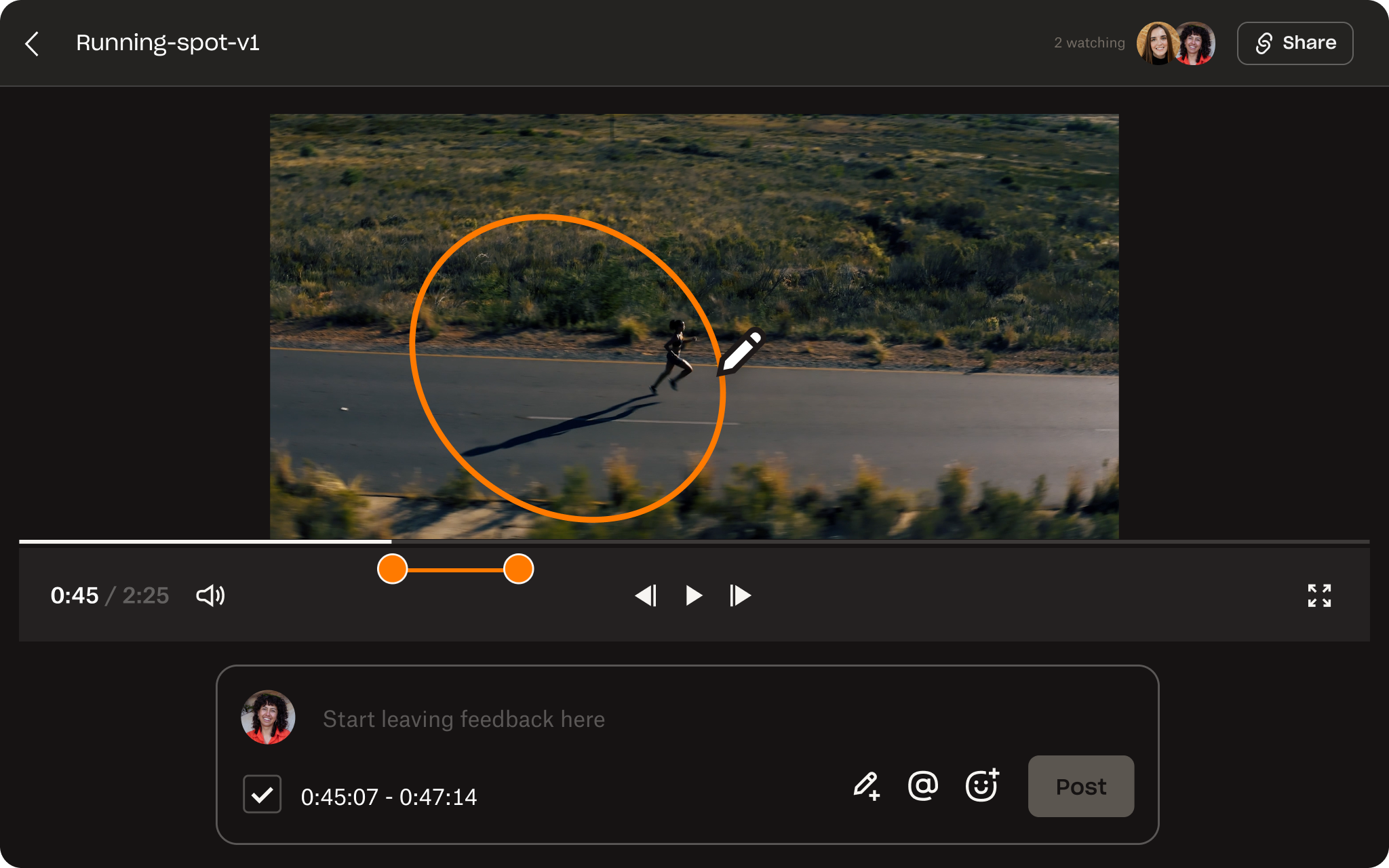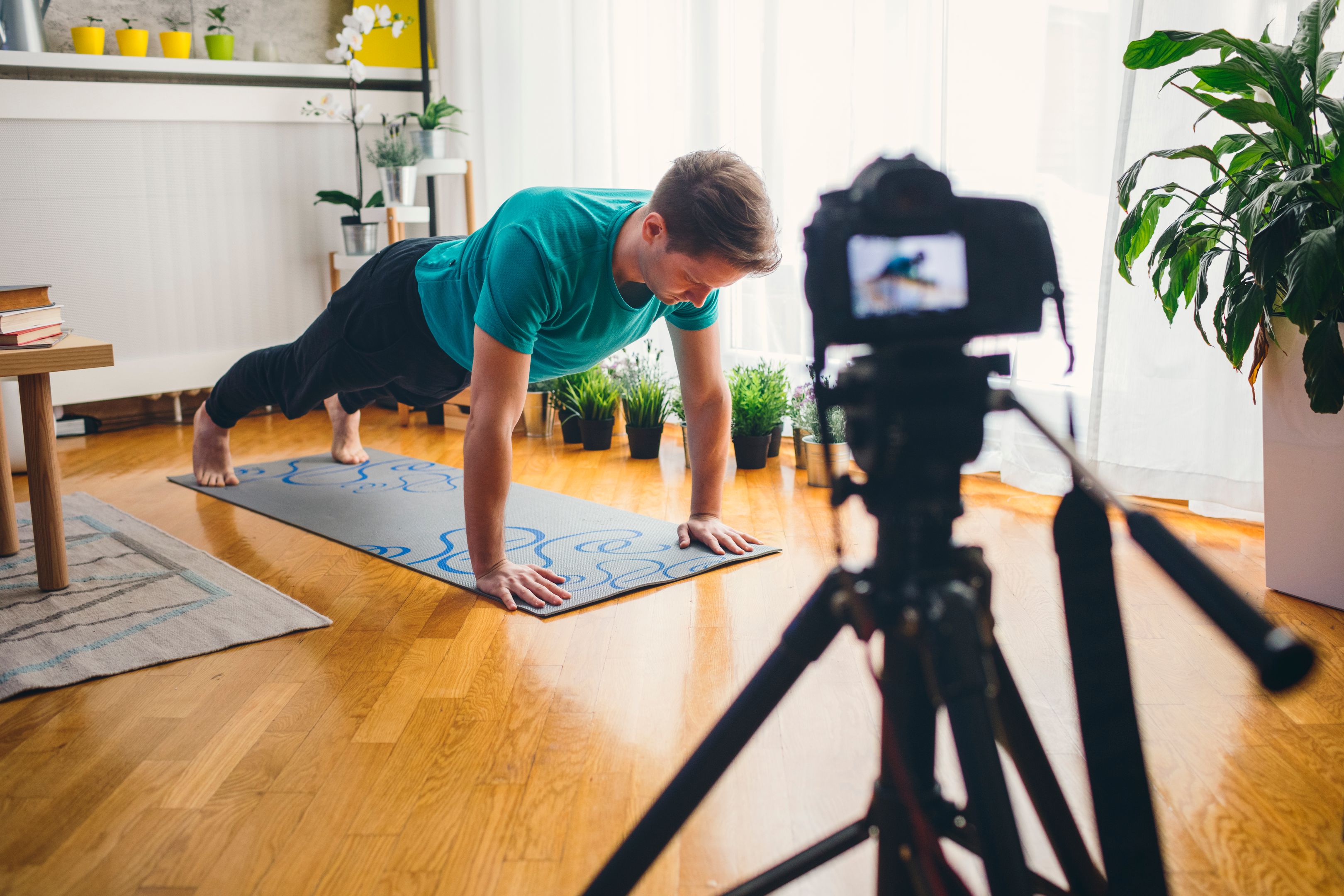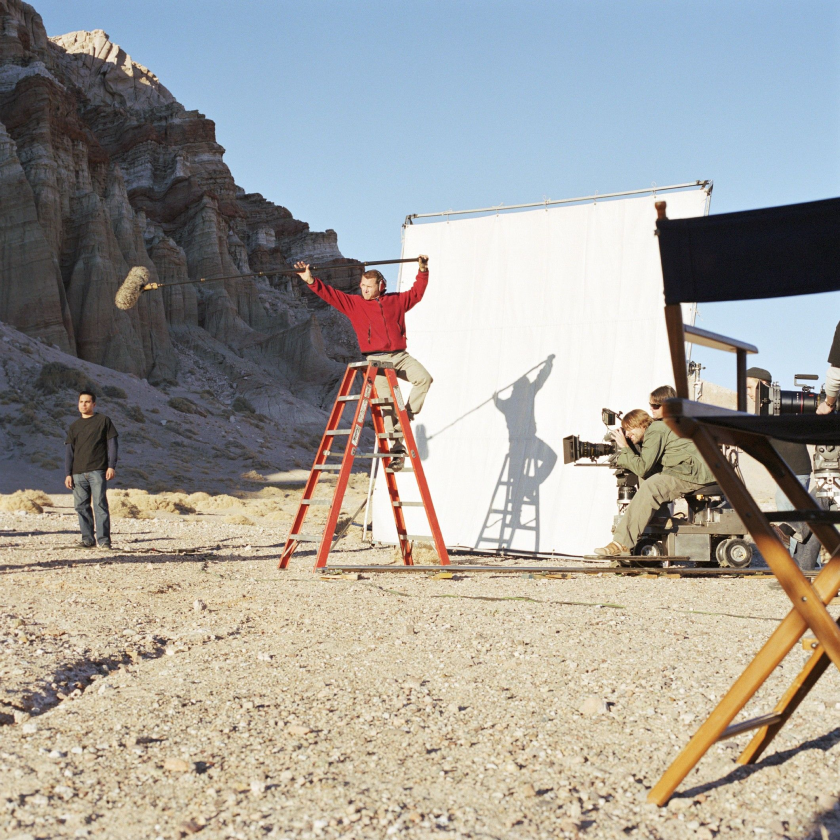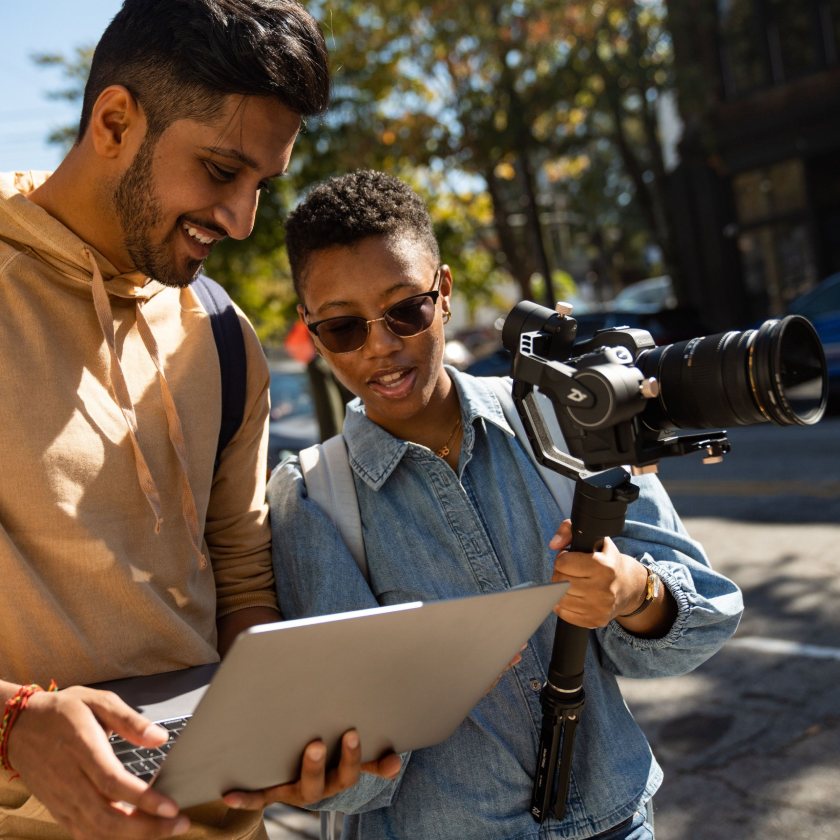Want to learn how to make and edit YouTube videos like a pro? It’s easy to dream about creating amazing YouTube content, but the process can feel overwhelming. There’s a lot to consider, like planning, filming, editing, publishing, and trying not to give up. Look no further—this guide has everything you need to know. Whether you're just starting out or looking to take your YouTube game to the next level, we’ve got you covered.
YouTube has become one of the most popular platforms for sharing videos and reaching a large audience. With millions of users worldwide, it's opened up endless opportunities for content creators to showcase their talents and share their passions. When you want to start a YouTube channel for fun or to build a successful career, one thing is for sure—creating and editing high-quality videos is key.
So if you’re a beginner working on your first YouTube video or looking to grow an existing channel, this guide will introduce you to a tried-and-tested YouTube video production workflow. From planning and editing to gathering feedback and publishing your content, this step-by-step guide will help you navigate the process and create compelling video content you can’t wait to share.
How to create YouTube videos: Step-by-step
Creating amazing YouTube videos takes more than hitting record and hoping to capture some magic. Before we dive into the details, let’s break down the key components of a successful video production workflow:
- Planning and strategy
- Content planning
- Preparing your tools and equipment
- Filming your video
- Editing your footage
- Gathering feedback
- Making your finishing touches
- Publishing your video

1. Create a strategy
Video clips are everywhere online—from short-form content on TikTok and Instagram to long-form YouTube deep dives and video podcasts. In a world where it feels like everyone is a content creator, making yourself stand out can be tricky.
Before you start filming anything, you need to research and choose the topic of your YouTube video—and your channel as a whole. In deciding what kind of video you want to create, consider:
- Any particular passion or skill of yours that can be portrayed on video well. Look to see if there’s a gap or unexplored angle in your area of interest—it’s a lot easier to stand out if you’re doing something unique in an established interest area!
- Your target audience, and the value this video would provide them. What are their problems or interests? What will they learn from your content?
If you’re stuck, consider which of the four types of video that are “universal” when it comes to social media content you’d most like to create:
- Emotional content—news stories, reviews, and reaction videos, for when viewers want to feel something like joy, laughter, nostalgia, or a connection to something
- Utility content—such as tutorials, how-to guides, and recipes, for when audiences are trying to achieve something like learning a skill or achieving a specific goal
- Numbers-driven content—infographics, polls, and data breakdowns that cater to people seeking factual information presented in an engaging video
- Story-based content—vlogs, documentaries, or success stories, perfect for audiences drawn to narratives that inspire, inform, or simply entertain them
Alternatively, you could conduct research using tools such as Google Trends, Semrush, or YouTube’s own search bar to get a feel for what people are searching for. Document your findings and keep it safe in cloud storage, where it’s accessible from any connected device.
2. Plan your content
You might want to start with an outline for your video and improvise the details during filming—that’s great if you have the confidence! An outline will help give your video focus and structure, but you may want to flesh this out into a more detailed script.
A storyboard is a creative way to visualize the outline for your video. It contains information such as:
- Drawings, sketches, images or photographs to represent each frame
- A description of the shot (such as the camera angles, lighting, dialogue, and action)
- Arrows to indicate camera/character movement or to show how each frame connects to the next
- Shot specifications, such as the size, lens length, and composition
3. Prepare your tools and equipment
Once you’re finished with your content creation plan, it’s time to start gathering the equipment you need to shoot your new video.
Though not a necessity now that mobile phone cameras and microphones produce such high-quality recordings, the following recording tools can really enhance your video:
- A good quality DSLR or mirrorless camera
- A microphone, such as a USB or lavalier
- A tripod or stabilizer
- A ring light or softbox lighting
However, if you’re completely new to creating content, you may want to start with baby steps—sometimes the fancy tech can take some time to get used to. These days, you can do a lot with a screen recorder, your mobile phone, or a webcam.
4. Film your video
You might want to do a practice run of your video before diving into the final recording. That way, you can make notes on what’s working and what’s not, and revise accordingly.
Recording yourself for the first time can be a strange experience, but it gets easier the more you do it. Try to stay relaxed, and don’t stop the recording even if you make a mistake—you can always edit the errors out later.
Here are a few tips to bear in mind while filming your video:
- Clear your space of clutter—the fewer distractions for your audience, the better
- Check that your equipment—especially your camera—is working properly, fully charged, and your lens is smudge-free
- Record in a quiet environment without any background noise
- Position your camera so that you’re in the center of the frame and at eye level
5. Edit your footage
The video editing process is when you can start to craft your raw footage into a compelling, engaging story for your viewers.
If you shot your footage on your phone, tablet, or computer, your device may already have a decent built-in video editing tool you can use, like iMovie for Mac.
Alternatively, if you want to enhance the quality of your video and ensure it looks as professional as possible, you should look at more advanced platforms like Adobe Premiere Pro, Apple Final Cut Pro, and Blackmagic Design DaVinci Resolve. And when your video is ready for review, these tools integrate with Dropbox Replay so you can action feedback directly from Replay within your editor.
Essential things to focus on during the video editing process include:
- Trim mistakes
- Don’t add too many sounds, cuts, and transitions
- Make sure your audio is good quality
- Add appropriate music
- Tweak lighting with color correction

6. Gather feedback
Feedback is an important but often overlooked step in the video production process.
Sharing your edited video with trusted peers is an excellent way to get fresh perspectives on your content—reviewers may be able to identify specific things that could be reworked, moved around, or cut entirely.
With tools like Dropbox Replay, you don’t need to worry about scattered feedback or lengthy chat threads. Replay allows your reviewers to provide accurate, effective, time-stamped feedback directly onto the video. Comments can be exported directly into your video editor so they show up as markers, making it easy to find where changes are needed.
Replay also makes it easier to keep track of different versions of your video. After making your changes, directly upload your video into Replay as a new version from within your video editing software to reshare for additional feedback. You can then do a side-by-side playback of two versions in Replay to reference changes or updates to your video.
7. Make your finishing touches
Before publishing your video to YouTube, be sure to add an intro to your video as well as a compelling video thumbnail—one that’s simple and features you in it.
You should also consider adding an outro that encourages your videos to subscribe to your channel or a similar call-to-action.
Ensure that your video meets YouTube’s technical specifications so that your video displays properly on different devices. In particular:
- Aspect ratio: 16:9
- Maximum video file size: 128GB
- Maximum video length: 12 hours
- Accepted video formats: .mov, .mpeg, .mp4, .avi, .wmv, .mpegps, .flv, .webM, .3GPP
- Video resolution: A recommended minimum of 640x480 for 4:3 aspect ratio, 1280x720 for 16:9 aspect ratio—but there’s no set minimum
8. Publish your video
Once your video is edited and ready to go, it’s time to upload it to your YouTube channel! This is a relatively simple process, which you can do directly from your YouTube account, either on your mobile or desktop.
Make sure your video has the following details:
- A keyword-rich and relevant title
- A description which provides some context to the video and elaborates on the title
- The custom thumbnail you created earlier
- Audience—required as part of the Children’s Online Privacy Protection Act (COPPA)
- Any age restrictions

How to optimize videos for YouTube
Here are some tips for optimizing your videos for YouTube:
- Optimize your video for SEO by including your keyword in the title and video description—but don't mislead viewers
- Keep your style consistent in videos to thumbnails—a recognizable look helps audiences spot your content easily
- Encourage viewers to like, comment, and subscribe
- YouTube transcribes videos, so be sure to say your keyword in your voiceover or dialogue
- Make your video longer—YouTube uses “Total Watch Time” and “Total Session Time” as ranking factors and pushes longer videos higher in search results
- Choose strong, relevant keywords for your tags
- Stick to a schedule—consistent, regular uploads keep your viewers coming back for more
- Organize your videos into playlists to make it easier for viewers to find them on your channel
Polish your YouTube videos with Dropbox Replay
There’s much more to creating YouTube content than shooting your footage. Eye-catching, high-quality YouTube videos require a comprehensive approach that encompasses planning, filming, editing, optimization, and promotion. Each of these elements plays a vital role in creating content that not only attracts viewers but also keeps them coming back for more.
Dropbox Replay enables budding YouTube creators to get started on the right foot by incorporating feedback into the editing workflow from the beginning. With Replay, you can easily gather feedback, make changes, and track revisions, all within a single platform. Start using Dropbox Replay today and take your YouTube videos to the next level!


